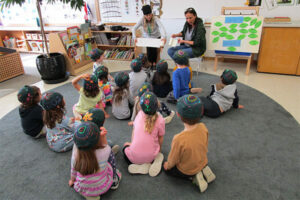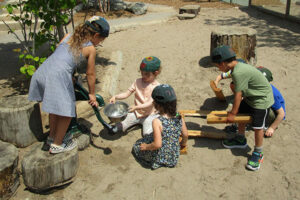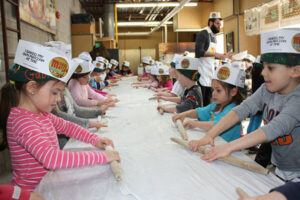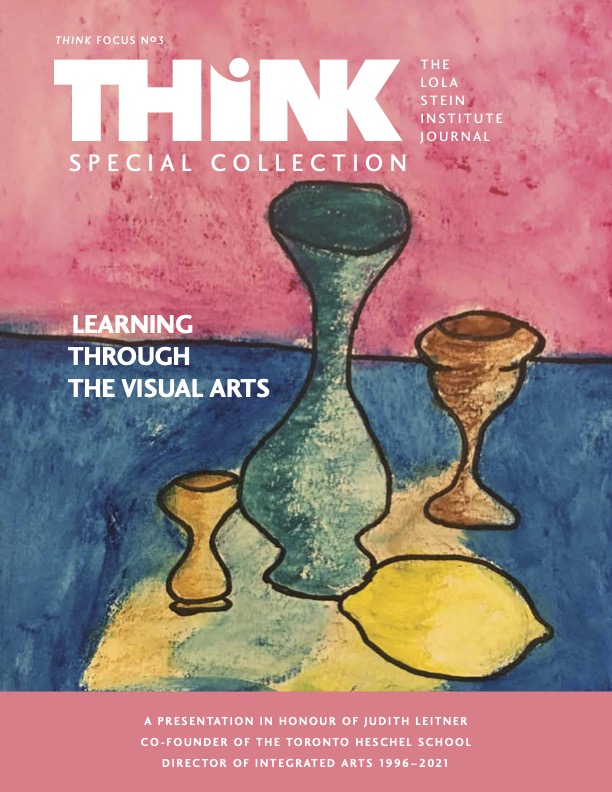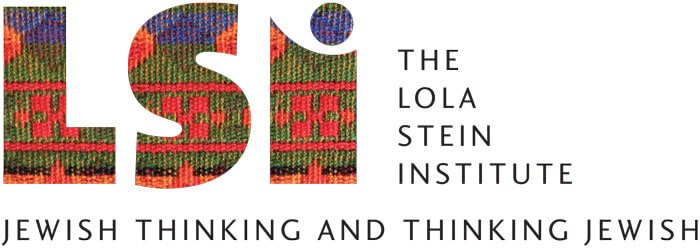- How We Teach

- First Column
- Second Column
- Third Column
- Case Studies

- First Column
- Second Column
- Culture & Community

- First Column
- Second Column
- News & Views

- Admissions

- First Column
- Second Column
- Support Us

- About

- First Column
- Second Column
- Parent Hub
- Attend an Open House
- Take a Tour
- Donate Now
- Calendar
- Blog
- 416-635-1876
- Search
How Do I Love Thee, O Artist Statements! Let Me Count the Ways
by
I have heard our beloved Morah Judith Leitner ask a whole class of kindergarten students “Who’s the artist?” with each enthusiastically shouting back at her, full of confidence and emunah (faith), “I am!” To give young people the conviction that they are artists, that they are what they create, brings value into our world. It is one of the greatest gifts that we can give our students.
Only a true artist and gifted educator would consider having even the youngest students identify their artwork with a sincerely thought-through title and compose an equally personal artist statement. Morah Judy, a co-founder of The Toronto Heschel School and my art teaching mentor, is that very artist-educator. Judith Leitner taught me to respect each student
I teach as an independent authentic creator. She encouraged me to embolden students to take creative risks in their artistic decisions, and to approach art-making with reverence, trusting their hearts and instincts. Now I ask my own students, “Who’s the artist?”
So why do I love the asking so much? I love it because a student’s self-identification as an artist opens a window into the young artist’s soul, one that lets me peer in as their teacher. I can then collaborate step by step and support my students as they assume ownership of their work, their thoughts, their lives.
The crafting of an artist statement delivers strong educational value for students and teachers alike. When artists speak or write about their work, they reveal the why behind their expressions and, while their articulations voice their decisions, they also render visible the missed opportunities. This looking into the how and why of decisions elucidates what came intuitively and what was serendipitous; it shows me, their teacher, as much about which skills have been mastered and which need work. I can then help students to solve problems and bring the artwork that they envision into being. Every element in a work of art is a function of choice, just like every other decision we make as we move through our day.
Reading my students’ artist statements brings me closer to understanding what’s going on inside their heads. They will often write down what they won’t share verbally, and I watch this articulation extend their self-awareness as artists and as human beings. Rabbi Abraham Joshua Heschel taught that we must remember to build our life “as if it were a work of art.” Before children can conceive or plan the masterpiece that we hope will become their lives, we must first help them learn what it means to develop, craft, fix, and claim a piece of creative work.
First, the opportunity to name an artwork signifies that it has value—students receive their names from their parents, and now it’s their turn to identify and claim what they have created and feel responsible for what they are developing. While the art can and does speak for itself, the title and artist statement validate the voice of the artist, especially those too shy to share openly and those who need an invitation to claim their point of view. Bringing students to see themselves as artists names them as such and confers on each of them the dignity of being valued; their particular voice, their personal opinion, and their very own artwork matter. Artist statements become like a diary, a personal record for students to trace the ideas and insights that mark their growth.
Crafting an artist statement requires that students reflect on their work not once, but twice. They focus first during the creative process itself, and then they think again, often quite deeply, on what it was that they had been considering during the period of creative flow. Meaningful personal reflection builds three important character strengths: effort, humility, and courage. I am also an artist and when I look at my own artwork I analyze what worked and what didn’t, and I am trained to do this objectively with a critical eye. Writing an artist statement trains my students to evaluate their own efforts and become empowered by the beauty they have brought into the world; it also provides practise in concisely articulating ideas that are complex and personal. My art students are in training to say what they mean and this important skill will serve their future schooling, careers, and relationships as a firm foundation for critical self-reflection and self-expression. I am afforded a glimpse into how my students prioritize as they make decisions. I see how the cogs turned as they conceived their idea, the method by which they brought it to life, what they chose to do or omit, where they made a tactical error (have you thought of glue…?) or if they avoided something in particular. Their articulations surface which of their ideas came in a snap and which they agonized over through a period of time.
Through their honesty, I become privy to my students’ insecurities and ambitions. They mine treasures from experiences they had while creating their work. I have seen them unearth true insight into their personal way of being, and observed them reach a level of metacognitive understanding that they may not have otherwise attained. This includes interdisciplinary connections between ideas studied across curricula, integrating Jewish and universal learning, as well as revelations that were surprising both to themselves and their reader.
Over the years, my students have learned—and shared with me—that they don’t need sparkles on their artwork to see it has value. They have also learned to begin their work earlier, not to be so hard on themselves, and that taking risks leads them to incredible results. The process of writing artist statements leads to self-discovery because it lays out what hasn’t been seen before. It exposes our artists to themselves.
As I consider what each of my students creates and I read their artist statements, I learn a lot about myself, their teacher. I feel myself awakening again and again to an authentic fresh process of discovery, and it is my privilege to do so. I’m not just seeing a beautiful work of art. I’m getting to know it from the inside out. Through the practice of saying what they mean, students are setting themselves up for life. They can describe and pursue their intentions as the work of art that Rabbi Heschel suggests. They can do it because they truly believe that they are artists, just as Morah Judy said.
Lisa Sheps teaches visual art at The Toronto Heschel School. She studied and practiced architecture before pursuing a career in education, and integrates her art and design background into her daily classroom teaching.
Special Feature
Our Sages Tell Us
Columns
Perspectives
 The Lola Stein Institute (LSI) is a centre of inventive educational thinking and addresses the challenge to re-frame schooling for the exigencies of our times.Home > THINK Magazine > Special Collection: Learning Through the Visual Arts > How Do I Love Thee, O Artist Statements! Let Me Count the Ways
The Lola Stein Institute (LSI) is a centre of inventive educational thinking and addresses the challenge to re-frame schooling for the exigencies of our times.Home > THINK Magazine > Special Collection: Learning Through the Visual Arts > How Do I Love Thee, O Artist Statements! Let Me Count the Ways

